Pig farming can be highly profitable if proper care is given to the pigs’ health. However, it can lead to huge losses if diseases are not prevented or managed effectively. Maintaining proper hygiene in commercial pig farms is important for preventing the diseases and ensuring the health of the animals.
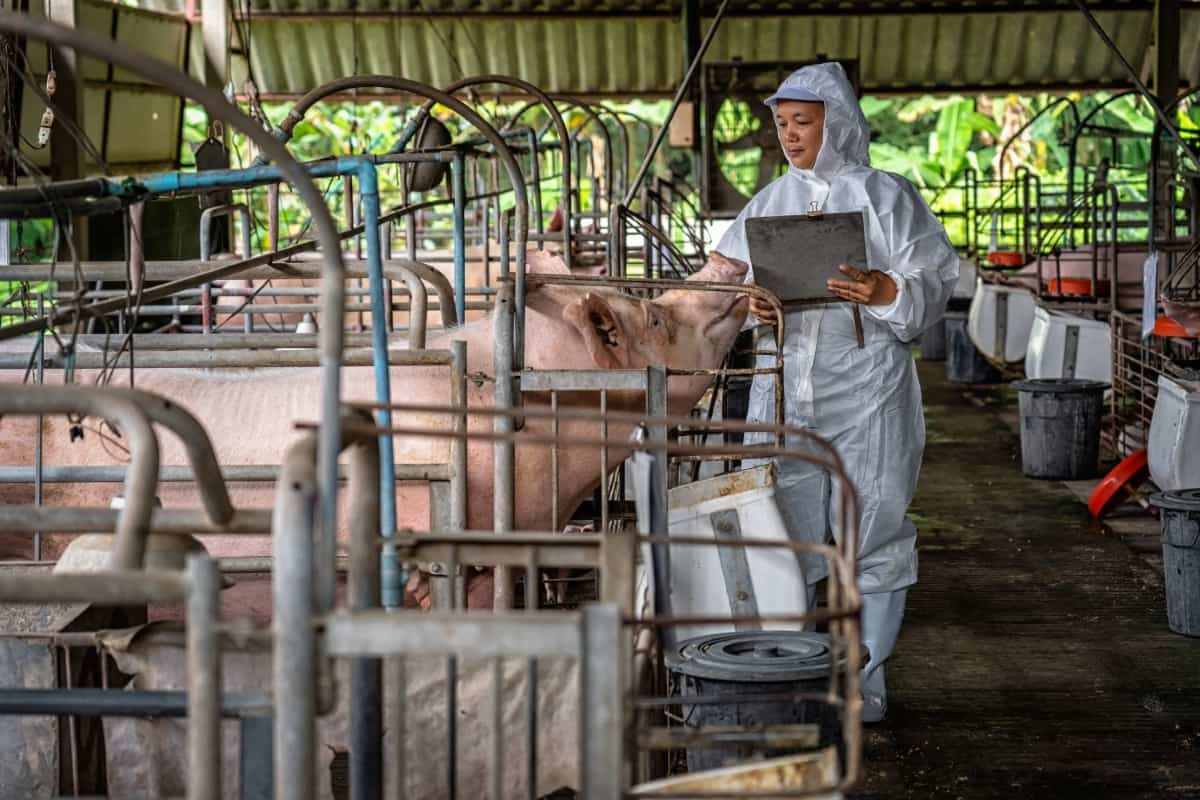
Disease Prevention and Management in Commercial Pig Farms
Diseases in Commercial Pig Farms
- In commercial pig farms, many diseases can affect the health and productivity of pigs. Some of these diseases include African Swine Fever, Classical Swine Fever, Swine Brucellosis, Pseudorabies, Exudative dermatitis, Coccidiosis, and respiratory diseases like swine dysentery and mastitis.
- African swine fever disease is a highly contagious viral disease characterized by hemorrhages on infected animals’ skin and internal organs. Classical swine fever is also a viral disease that causes loss of appetite, high fever, and ultimately death in pigs.
- Swine brucellosis is caused by bacteria called Brucella suis which can cause reproductive tract infections leading to abortions in sows. Pseudorabies affects both wild boars and domestic pigs, causing respiratory distress, among other symptoms.
- Respiratory diseases like pneumonia are common among pigs housed in crowded conditions. At the same time, mastitis occurs mostly during the lactation period for sows, which viruses, bacteria, or other pathogens can cause. Respiratory illness can lead to coughing, sneezing, fever, and decreased appetite.
- Coccidiosis is another parasitic infection affecting young weanlings mainly due to unsanitary environments with poor hygiene management practices.
- Therefore, farmers need to be aware of these potential threats to their livestock so they can take preventative measures against them before they spread throughout their herd.
In case you missed it: Pig Waste Management and Sustainable Manure Utilization
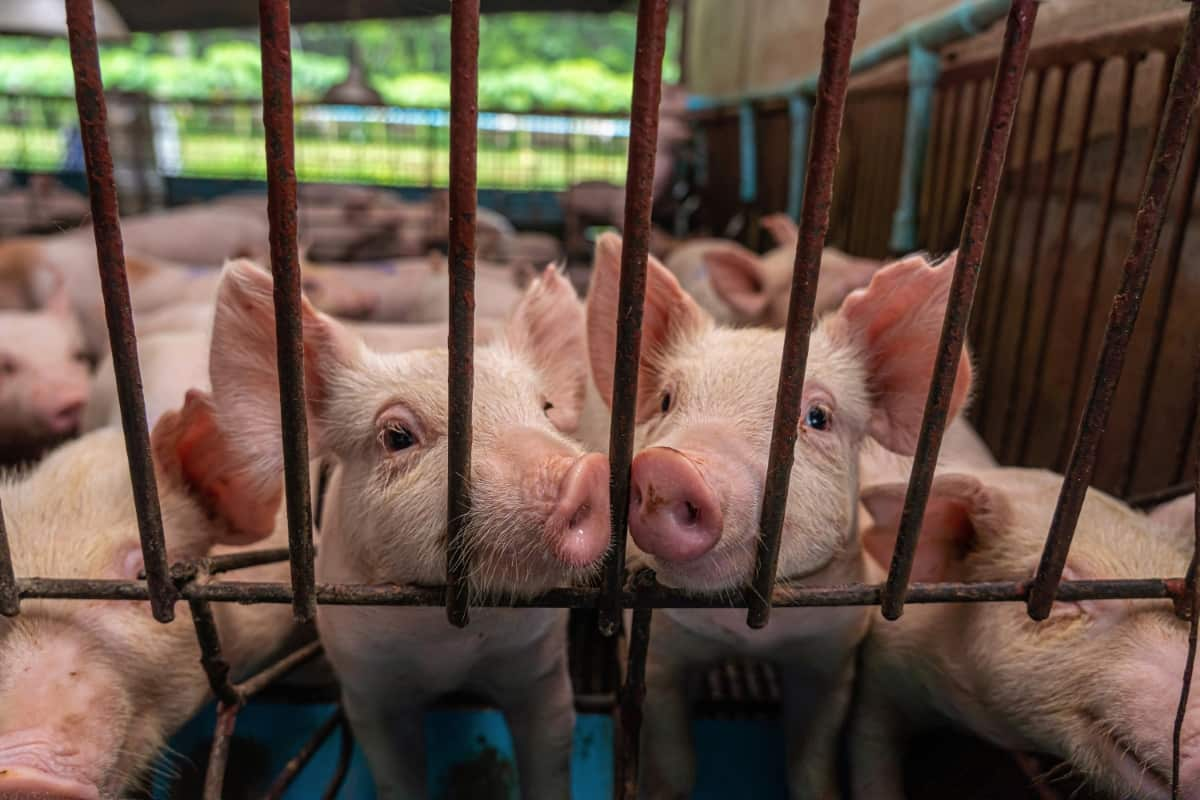
Pig Hygiene Tips for Controlling Diseases
- Regular cleaning: Pigs should be housed in clean, well-ventilated pens that are cleaned regularly to prevent the buildup of manure and other waste.
- Water supply: Clean water must always be available, as unclean water can easily transmit diseases among pigs.
- Disinfection practices: Proper disinfection methods must be used when cleaning pig pens, equipment, and tools to ensure that harmful microorganisms do not continue to thrive.
- Quarantine new arrivals: New pigs brought into the farm should be separated from existing herds until a qualified veterinarian has checked them.
- Personal hygiene while handling pigs: Handlers must avoid spreading infections between different groups or batches of animals by keeping themselves clean, wearing protective clothing like gloves and boots, and washing their hands frequently with soap and water.
How to Tell That a Pig is in Bad Health?
- Physical Appearance: A pig in poor health may have an unkempt appearance, dull coat, or rough hair. The animal would also appear less active than usual.
- Appetite and Water Consumption: Reduced appetite, increased water consumption, or the complete absence of these could mean the pig is unwell.
- Breathing Difficulties: Shortness of breath or wheezing sound while breathing might indicate respiratory problems.
- Behavioral Changes: A healthy pig will typically move around with ease and energy; however, if you notice slow movements and lethargy, it could signify poor health.
- Gastrointestinal Issues: Diarrhea or constipation is a sign something isn’t right with the digestive system of pigs.
In case you missed it: How to Build a Low-cost Pig House: DIY Steps, Barn Design, Shed Requirements, and Cheap Ideas
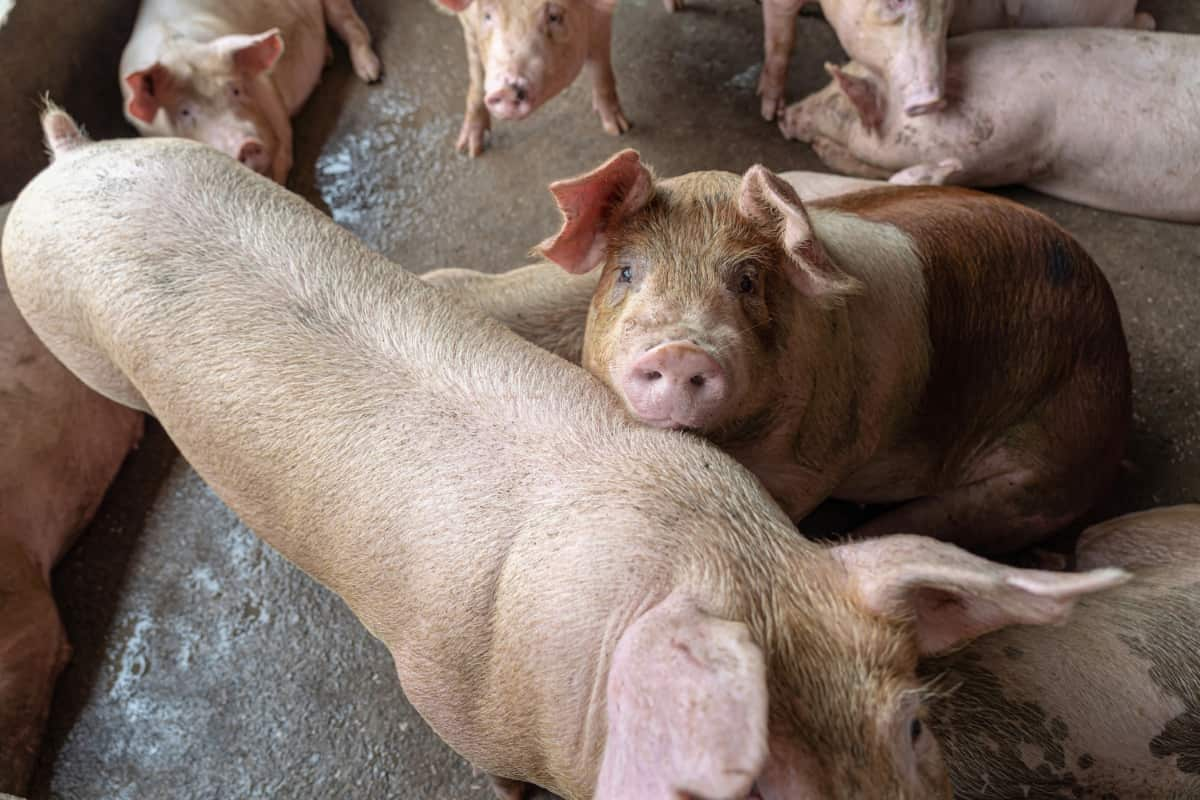
Health-Management of Pigs
- The health management of pigs is crucial to ensuring the profitability and sustainability of commercial pig farms. Proper management practices can reduce the incidence of diseases, which in turn minimizes treatment costs and mortality rates.
- One important aspect of health management is the regular observation of the pigs. Farmers should be vigilant for signs of illness such as coughing, sneezing, or diarrhea. Early detection allows for prompt intervention before a disease outbreak occurs.
- Providing an appropriate diet plays a significant role in maintaining pig health. A balanced diet ensures that pigs receive all the necessary nutrients for growth and development.
- Maintaining proper hygiene within the farm environment contributes significantly to pig health management. Pig pens should be kept clean and well-ventilated, while drinking water sources must always remain clean and fresh.
- Farmers need to establish a working relationship with their veterinarian doctor, who will assist with managing animal health on their farm by providing expert advice on optimal vaccination protocols and potential disease outbreaks, among other aspects related to animal welfare.
- Good herd management practices accompanied by careful observation techniques are critical components necessary for successful pig farming operations; this includes healthy feeding habits alongside adequate animal housing facilities where farmers can provide quality care while maintaining cleanliness throughout each step in the process from birth through the slaughter period.
Develop and Maintain Piggery Practices to Control Diseases
- The first step is ensuring that pigs have a clean, comfortable, and stress-free environment. This means regularly cleaning their pens, providing adequate ventilation and temperature control, and providing enough space for them to move around.
- Another important aspect of piggery practices is feeding management. It’s essential to provide pigs with a balanced diet that meets their nutritional needs while minimizing the risk of disease transmission. Pigs should be fed high-quality feed in sufficient quantities at the right intervals.
- Proper sanitation measures must also be implemented within the farm premises. This includes regular disinfection of equipment, floors, walls, and other surfaces where bacteria can thrive. All personnel who enter or work on the farm should follow strict biosecurity protocols, such as wearing protective clothing like boots and gloves, before entering any pig housing areas.
- Pig farmers must also keep accurate records of all farm activities, including medication administration, feed consumption, and breeding data, to easily track production trends over time, which will help identify early warning signs of disease outbreaks.
- Developing and maintaining good piggery practices is vital in promoting animal health by reducing stressors that compromise immunity resulting in lower incidence rates of diseases amongst pigs, thus ensuring overall profitability for commercial pig farm owners.
- Prevention strategies such as providing suitable feed and water containers, isolating new animals upon arrival on the farm, and using disinfectants can greatly reduce disease incidence. Proper disposal of dead pigs is equally important.
- Biosecurity measures like controlling access to the farm by visitors or other vehicles that may bring infections are crucial. Also, regular testing helps identify potential outbreaks early enough before they become widespread.
- By providing suitable feed and water containers, isolating new animals, disposing of dead pigs properly, using disinfectants for cleaning purposes, and quarantining sick animals, one can reduce the risk of disease spread within their herd. In addition, taking care when choosing healthy pig feed that meets all nutritional requirements while maintaining health can help prevent many common diseases.
In case you missed it: Pig Farming in Nagaland: Business Plan, Schemes, Breeds, Loans, Setup Cost, Profit, And Requirements
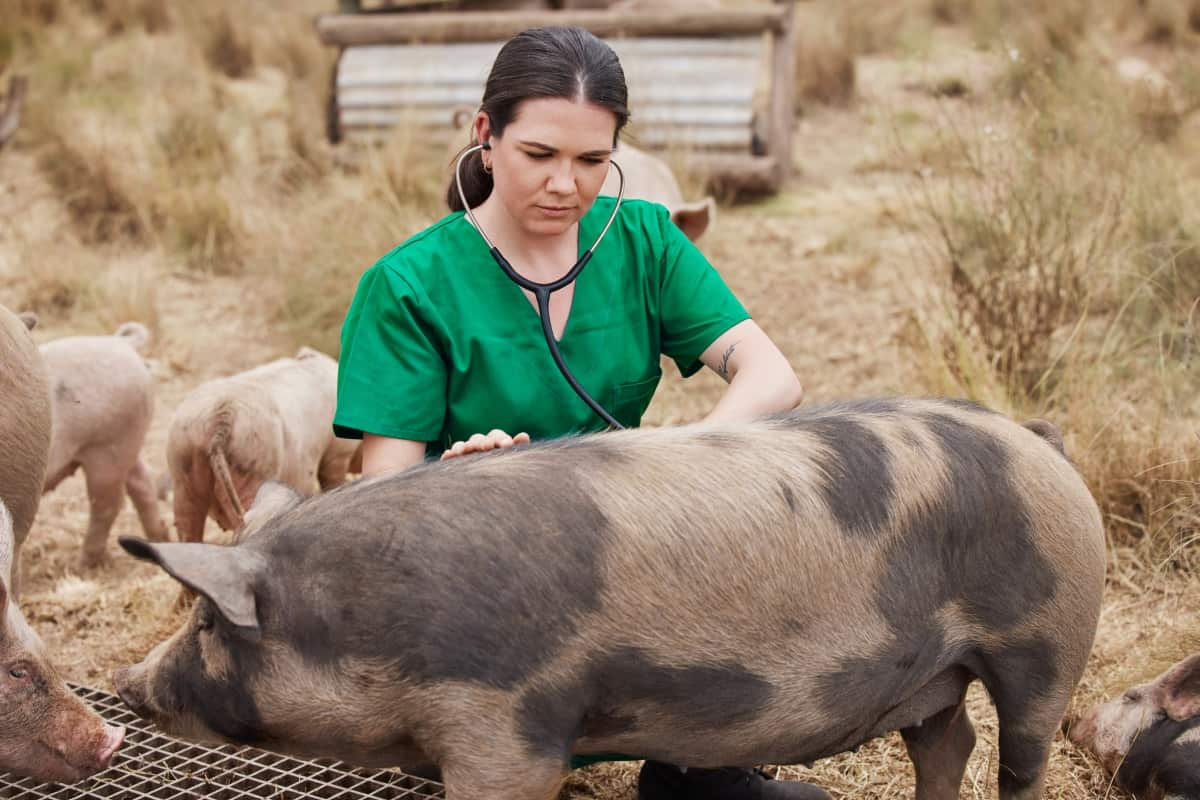
What are the Biosecurity Measures in Pig Farms?
- Biosecurity is a critical aspect of managing diseases in commercial pig farms. It involves implementing measures to prevent the entry and spread of pathogens that could cause animal disease outbreaks.
- One essential biosecurity measure is controlling access to the farm by limiting human traffic, vehicles, and equipment coming in and out. Proper disinfection protocols should also be put in place for all visitors, staff, and vehicles entering or leaving the farm.
- Another crucial step is implementing an isolation protocol for new animals introduced into the herd. This involves keeping them away from other animals until they are confirmed healthy and free from contagious diseases.
- Farmers must also dispose of dead pigs properly to prevent contamination of surrounding areas. A veterinarian doctor should always supervise this process to ensure it’s done correctly without endangering animal or human health.
- Pig farmers must minimize contact between their herds and wild animals that may carry harmful pathogens, such as rodents, birds, or feral swine. Additionally, proper hygiene practices like hand washing before handling pigs should be strictly enforced among employees working on the farm.
- Maintaining good biosecurity measures is key to preventing disease outbreaks on commercial pig farms. Ensuring strict adherence to these measures with proper supervision from experts like veterinarians will help keep your herd healthy while protecting neighboring farms from potential infections.
Management Tips in Commercial Pig Farms
- Managing a commercial pig farm requires careful planning and attention to detail. One important tip is ensuring the pigs have adequate space, food, water, and ventilation. Overcrowding can lead to stress, which weakens the immune system of pigs and makes them more prone to disease.
- It is also important for farmers to maintain good hygiene practices in their facilities. This includes regular cleaning and disinfecting of pens or enclosures where the pigs are kept. Farmers should also consider implementing biosecurity measures, such as limiting visitors who may inadvertently bring diseases onto the farm.
- Another key management tip is monitoring pig health regularly through observation and veterinary check-ups. Early detection of any illness can help prevent an outbreak from spreading throughout the herd.
- Additionally, farmers must stay up-to-date with industry trends and best practices by attending conferences or workshops related to commercial pig farming. Learning about new technologies or advances in animal health research can help improve overall efficiency while reducing costs associated with disease outbreaks.
In case you missed it: Key Rules to Start Pig Farming in Denmark: Business Plan, Breeds, Setup Cost, Proft, and Management
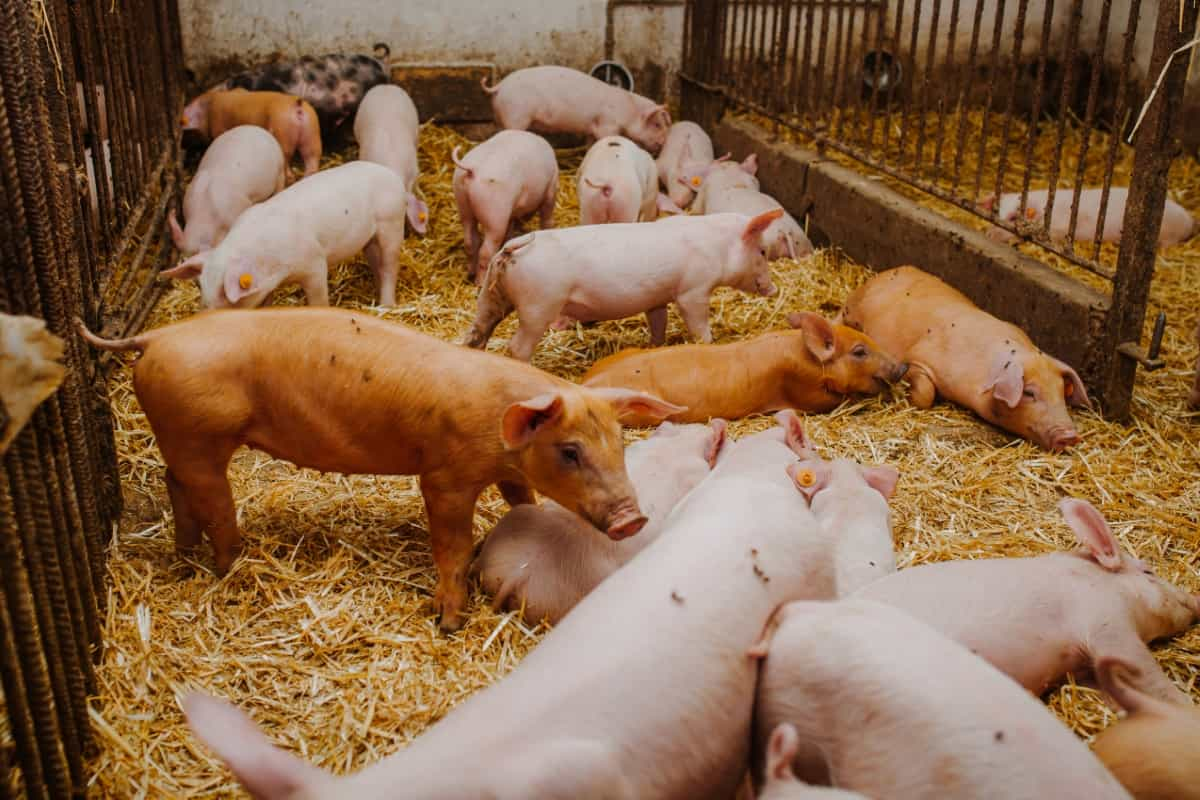
Disease Prevention in Commercial Pig Farms
- Providing suitable feed and water containers is important for preventing diseases in pigs. Clean water should always be available, and feed should be stored properly to avoid contamination. It’s also important to isolate new animals before introducing them into the herd to prevent potential infections.
- Proper disposal of dead pigs is another critical component of disease prevention on pig farms. Dead animals should be removed promptly and disposed of correctly to reduce the risk of bacteria growth.
- Using disinfectants regularly can help remove harmful pathogens from pens, equipment, and other surfaces that may come into contact with pigs or their waste products.
- Proper sanitation practices must be implemented to reduce the chances of transmission through fomites such as equipment, clothing, or vehicles that move between farms. Regular cleaning and disinfection of shared spaces like barns, pens, and feeding areas can also help prevent disease.
- Hiring a veterinarian doctor who specializes in swine health management can also go a long way towards preventing diseases on your farm. It’s important to adhere to strict biosecurity protocols to control diseases in commercial pig farms. This means limiting access to your farm by unauthorized personnel or vehicles that may carry pathogens. It also involves keeping a clean environment for your pigs by regularly cleaning their pens and equipment with appropriate disinfectants.
- Another key tip is regular health checks on all pigs in your herd, especially when they’re most vulnerable to infection, such as weaning or transport. Early detection of any illness can help prevent further spread throughout the herd.
- Controlling pests like rodents and insects is important as they carry harmful bacteria that can infect your herd. Ensuring good biosecurity measures by limiting visitors to your farm or requiring them to wear protective clothing when visiting will lessen the chances of infectious agents entering your piggery.
- Monitoring the health status of each animal daily through regular checking on feed intake quantity will allow early detection if an individual pig falls ill. Early treatment can improve recovery rates while reducing transmission risks quickly.
Good Herd Management Practices for Controlling Diseases in Pigs
- Good herd management practices such as careful observation, quarantining sick animals, maintaining hygiene standards, and providing clean living environments are essential in reducing disease occurrences in commercial pig farms.
- Maintaining cleanliness involves regularly disinfecting their living area and ensuring access to fresh water. It’s also important to isolate new animals before introducing them to the main herd, as they may carry diseases that can infect other pigs.
- Feeding your pigs with healthy food also helps prevent disease outbreaks. A well-balanced diet will improve their overall health and boost their immune system, making them less susceptible to illnesses.
- Using disinfectants can help eliminate harmful bacteria, viruses, and fungi that may cause diseases in pigs. Regular cleaning with approved disinfectants helps keep pig pens free from pathogens and maintains good hygiene practices on the farm.
- Implementing biosecurity measures such as limiting visitors, using separate equipment for each pen, and wearing protective clothing when entering pig facilities can reduce the risk of spreading diseases within your farm.
- Effective disease management requires careful planning, timely intervention when necessary, regular monitoring for early detection, and good communication with veterinarians. A proactive approach towards preventing diseases goes hand-in-hand with proper hygiene practices, ultimately leading to healthier pigs and higher profitability for commercial pig farmers.
In case you missed it: How to Start Pig Farming in Israel: Breeds, Business Plan, Key Rules, Setup Cost, and Profit
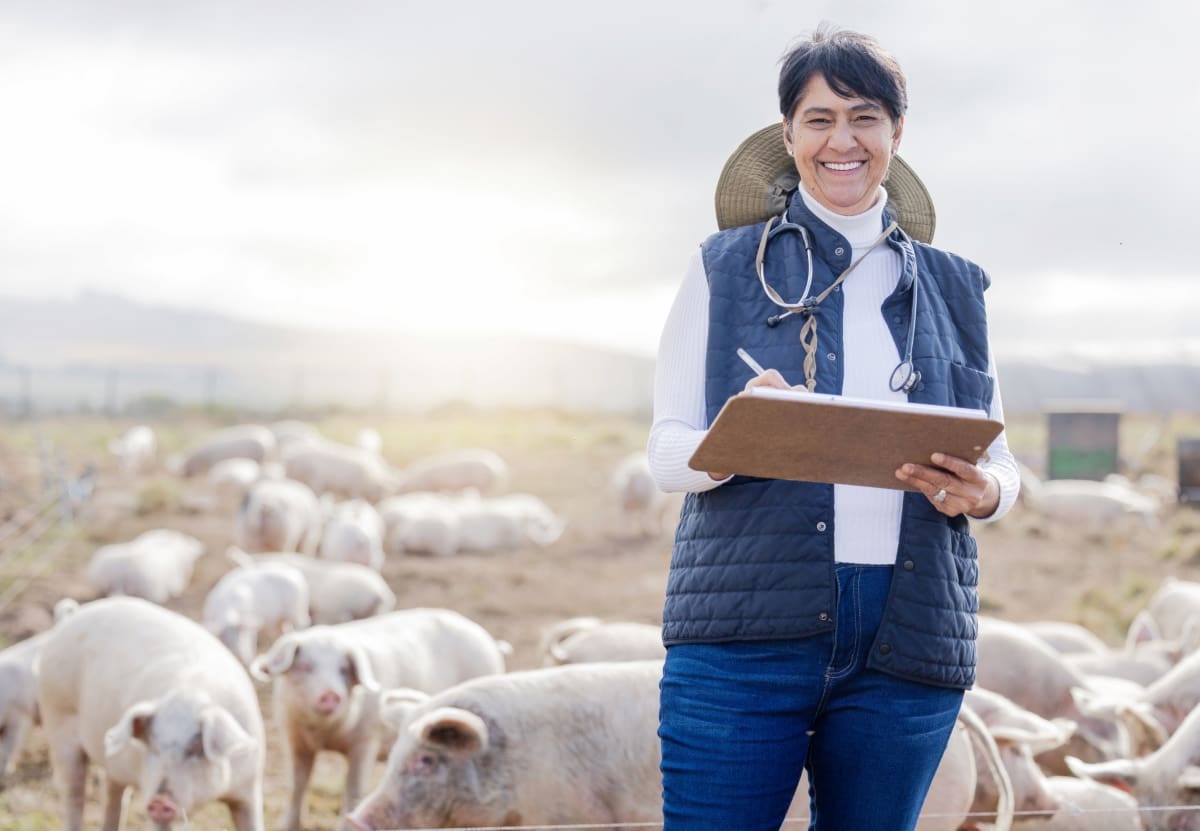
Conclusion
Proper hygiene practices are essential in preventing the spread of disease among pigs. Ensuring proper disease prevention and management should be a priority for all commercial pig farmers. Effective disease control requires a combination of good herd management practices, careful observation, quarantining, healthy pig feed, maintaining health and hygiene, providing a clean environment for the animals, and hiring a veterinarian doctor.
- Types of Pesticides Used in Agriculture: A Beginner’s Guide
- Economical Aquaculture: A Guide to Low-Budget Fish Farming
- 15 Common Planting Errors That Can Doom Your Fruit Trees
- How to Make Houseplants Bushy: Effective Tips and Ideas
- Innovative Strategies for Boosting Coconut Pollination and Yield
- Pollination Strategies for Maximum Pumpkin Yield
- The Complete Guide to Chicken Fattening: Strategies for Maximum Growth
- Natural Solutions for Tulip Problems: 100% Effective Remedies for Leaf and Bulb-Related Issues
- Revolutionizing Citrus Preservation: Towards a Healthier, Greener Future
- Natural Solutions for Peony Leaf and Flower Problems: 100% Effective Remedies
- Maximizing Profits with Avocado Contract Farming in India: A Comprehensive Guide
- Natural Solutions for Hydrangea Problems: 100% Effective Remedies for Leaf and Flowers
- The Ultimate Guide to Choosing the Perfect Foliage Friend: Bringing Life Indoors
- From Sunlight to Sustainability: 15 Ways to Use Solar Technology in Agriculture
- The Ultimate Guide to Dong Tao Chicken: Exploring from History to Raising
- The Eco-Friendly Makeover: How to Convert Your Unused Swimming Pool into a Fish Pond
- Mastering the Art of Delaware Chicken Farming: Essentials for Healthy Backyard Flocks
- 20 Best Homemade Fertilizers for Money Plant: DIY Recipes and Application Methods
- How to Craft a Comprehensive Free-Range Chicken Farming Business Plan
- Brighten Your Flock: Raising Easter Egger Chickens for Beauty and Bounty
- How to Optimize Your Poultry Egg Farm Business Plan with These Strategies
- Subsidy for Spirulina Cultivation: How Indian Government Schemes Encouraging Spirulina Farmers
- Ultimate Guide to Raising Dominique Chickens: Breeding, Feeding, Egg-Production, and Care
- Mastering the Art of Raising Jersey Giant Chickens: Care, Feeding, and More
- Ultimate Guide to Raising Legbar Chickens: Breeding, Farming Practices, Diet, Egg-Production
- How to Raise Welsummer Chickens: A Comprehensive Guide for Beginners
- How to Protect Indoor Plants in Winter: A Comprehensive Guide
- Ultimate Guide to Grow Bag Gardening: Tips, Tricks, and Planting Ideas for Urban Gardeners
- Guide to Lotus Cultivation: How to Propagate, Plant, Grow, Care, Cost, and Profit
- Agriculture Drone Subsidy Scheme: Government Kisan Subsidy, License, and How to Apply Online
- Ultimate Guide to Raising Araucana Chickens: Breed Profile, Farming Economics, Diet, and Care
- Bringing Hydroponics to Classroom: Importance, Benefits of Learning for School Students
- Ultimate Guide to Raising Polish Chickens: Breed Profile, Farming Economics, Diet, and Care
- Ultimate Guide to Raising Australorp Chickens: Profile, Farming Economics, Egg Production, Diet, and Care
- Silkie Chicken Farming: Raising Practices, Varieties, Egg Production, Diet, and Care
- Sussex Chicken Farming: Raising Practices, Varieties, Egg Production, Diet and Care